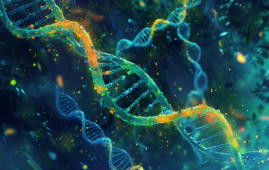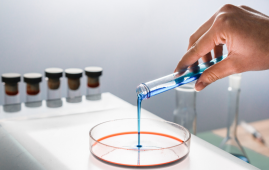

According to new research published in the European Journal of Allergy and Clinical Immunology, the Basophil Activation Test (BAT) can be used to detect allergies and predict the severity of allergic reactions better than traditional clinical criteria.
The Basophil Activation Test to Diagnose Food Allergy (BAT2) Study, conducted by Professor Alexandra Santos of King’s College London, sought to determine whether BAT testing may be used to predict the probability of severe allergic reactions and/or low reactivity thresholds.
For the study, 150 children were selected from specialized tertiary Paediatric Allergy clinics in London and subjected to a double-blind placebo-controlled food challenge to detect potential sensitivities to baked eggs. Patients that cleared this proceeded through a similar process, but this time with loosely cooked egg, with allergic reactions categorized according to Practical recommendations.
According to the findings, BAT was the greatest biomarker for predicting the severity and threshold of allergic reactions to baked eggs, with 75% and 71% accuracy, respectively. The findings suggest that in clinical practice, BAT could be used to assist identify allergies and minimize unintended and potentially severe reactions.
“Being able to identify patients who are more at risk of severe reactions or of reacting to small amounts of the allergen is very important so that we can implement measures to ensure such patients are safe and well-informed about their allergies.” – Professor Alexandra Santos
Food allergies are ubiquitous, and the severity of allergic reactions in the UK has tripled in the previous three decades. However, there is presently no mechanism to precisely identify children who are at risk of severe allergy reactions and/or reacting to tiny quantities of allergen.
The findings have ramifications for a huge proportion of the world’s population who suffer from food allergies, and they show that there is an easy technique to identify people at risk of severe allergic reactions, particularly to common foods like egg.
“It was striking that, when we looked at the children that, during the conduct of the study, we had identified as high-risk, there was an equal proportion of high-risk children among children who developed severe reactions and children who had mild or moderate reactions during the egg challenges. This observation clearly highlights that we are currently not able to identify high-risk groups based on clinical criteria. The basophil activation test showed to be the best predictor of severity and threshold, and could be very informative in clinical practice.”- Professor Alexandra Santos
Other characteristics of the children studied, such as age, gender, ethnicity, previous allergic reactions to egg, previous consumption of egg, history of eczema, asthma, allergic rhinitis, skin prick test, or specific IgE, did not differ significantly between children with severe versus non-severe reactions, or between children who react to low versus higher amounts of egg.
more recommended stories
 Phage Therapy Study Reveals RNA-Based Infection Control
Phage Therapy Study Reveals RNA-Based Infection ControlKey Takeaways (Quick Summary) Researchers uncovered.
 Pelvic Floor Disorders: Treatable Yet Often Ignored
Pelvic Floor Disorders: Treatable Yet Often IgnoredKey Takeaways (Quick Summary) Pelvic floor.
 Urine-Based microRNA Aging Clock Predicts Biological Age
Urine-Based microRNA Aging Clock Predicts Biological AgeKey Takeaways (Quick Summary) Researchers developed.
 Circadian Control of Neutrophils in Myocardial Infarction
Circadian Control of Neutrophils in Myocardial InfarctionKey Takeaways for HCPs Neutrophil activity.
 E-Cigarette Use and Heart Attack Risk in Former Smokers
E-Cigarette Use and Heart Attack Risk in Former SmokersKey Takeaways for Clinicians and Nurses.
 Ultramarathon Physiology: What HCPs Should Know?
Ultramarathon Physiology: What HCPs Should Know?Ultramarathon Metabolism: What Happens to the.
 High-Intensity Training and Oxidative Stress Insights
High-Intensity Training and Oxidative Stress InsightsNew Evidence Linking High-Intensity Training and.
 Sterilized Fermented Beverage for Obesity: New Evidence
Sterilized Fermented Beverage for Obesity: New EvidenceEarly Insights Into a Sterilized Fermented.
 36-Week Pre-eclampsia Screening May Reduce Term Risk
36-Week Pre-eclampsia Screening May Reduce Term RiskA New Preventive Strategy for Term.
 Cardiovascular Risk and Sudden Cardiac Death in Diabetes
Cardiovascular Risk and Sudden Cardiac Death in DiabetesRising Sudden Cardiac Death (SCD) Risk.

Leave a Comment